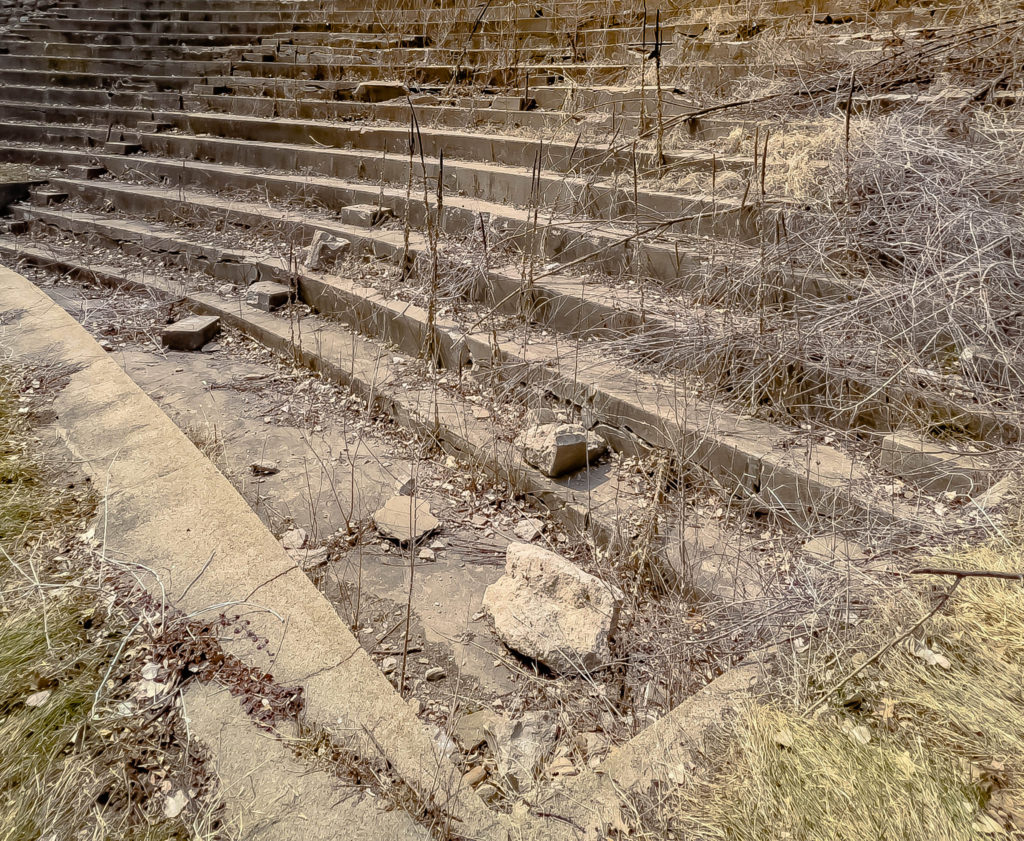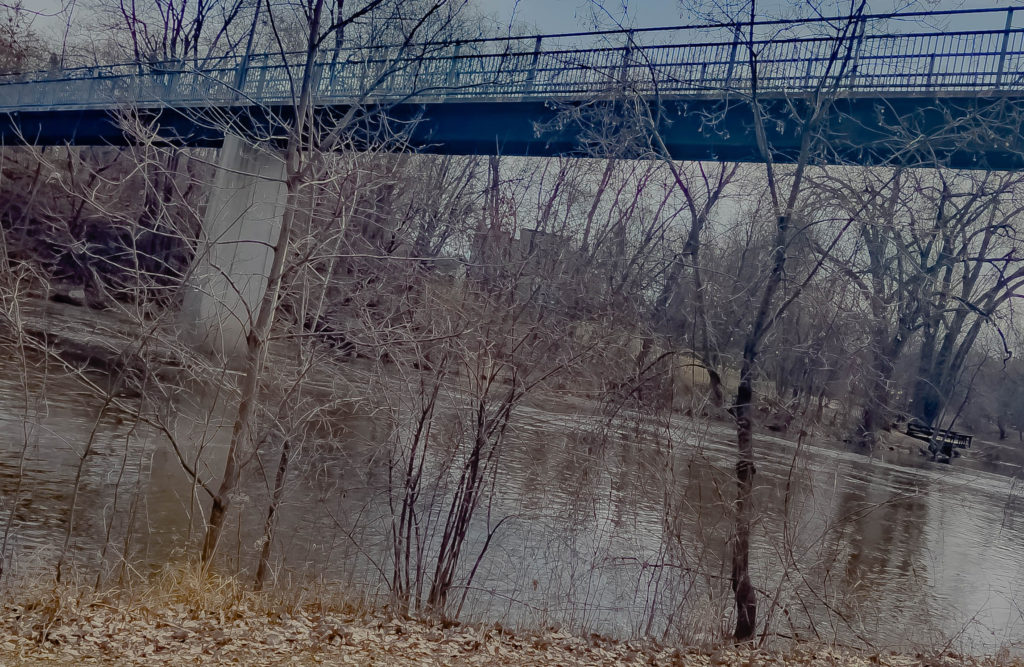
An abandoned amphitheater? Who could resist that?!
Anoka was my next stop on the exploration schedule to check out an old, abandoned amphitheater. With a hat tip to Brendon Maness for the tip, Derrick and I jumped in the car for a quick drive north on 169 and literally almost ran into the amphitheater as it’s a sidewalk away from 169 itself. Bet the traffic noise made for an interesting background to the entertainment folks put on there, back in the day?
My first impression of the amphitheater was an obvious one: this thing has been around a LONG time. The structure was put together back in 1914 on the banks of the Rum River in Anoka. The really interesting part to me is its name: the Windego Park Auditorium and Open-Air Theater. At first, I thought it was Wendigo. Do you know what a Wendigo is? I bet you do if you’re a monster movie buff like me.

The old theater is currently listed in the National Register of Historic Places and had to be a great place to watch a program back then. The location on the bank of the Rum River is beautiful.
Anoka’s citizens back then had a notable interest in outdoor entertainment and recreation. Thaddeus P. Giddings, a promoter of music education who’d been organizing community singalongs in the summer of 1913, took over organizing the programs and entertainment at the amphitheater.
Another gentleman named William Gray Purcell designed the amphitheater, and I thought he did a bang-up job. The stage sits on the flat part of the riverbank, and, as you can see in the pictures, the seats are on the sloping hillside. It had room for an audience of up to 1,600 people in its heyday.

At one time, the seating was covered by a colorful retractable awning system designed to protect patrons from the weather. That had to be a must-have during summertime storms and heat waves, am I right? A curved back wall at one time included a box office, entrance doors, and a projection booth, but that part no longer stands.

The theater was used for amateur plays, historical pageants, and other local community musical or meeting events. However, the theater would only thrive as long as Giddings was on hand. Giddings began spending summers at his music camp located in Michigan, and the amphitheater fell into disuse, with the exception of an occasional gathering.
In 1979, Anne Bronken, a University of Minnesota Landscape Architecture Department student, designed a plan to restore the amphitheater. Community organizers patched the concrete and did some cleanup work. A restoration planned as recently as 2010 didn’t happen. Today, the amphitheater has only its seating and orchestra pit left standing, and both are in a deteriorated state.


Here’s a link to my Facebook photo album
